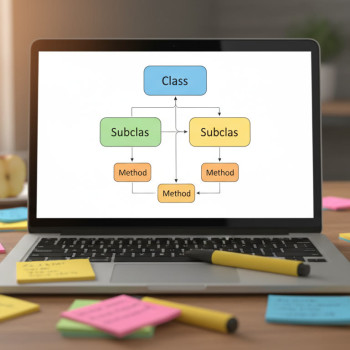Why Post-Set Review Is the Secret Weapon Top AP Scorers Use
You’ve just finished a set of AP practice questions. Maybe it was a 30-minute packet, a full FRQ, or a mixed-section multiple-choice block. You glance at your score and — ouch — there are a few misses. What now? Toss the paper in a folder and move on like nothing happened? That’s the most common mistake. The smarter move is a deliberate Post-Set Review: a short, repeatable routine that transforms each wrong answer into a specific rule you can apply next time.
This blog is a friendly, practical walkthrough for students preparing for College Board AP exams. We’ll make Post-Set Review easy, tactical, and — dare I say — even enjoyable. Expect concrete steps, examples, a simple tracking table, and ways to fold personalized help (like Sparkl’s 1-on-1 tutoring and tailored study plans) into your workflow.
What Is a Post-Set Review?
A Post-Set Review is a focused, 10–30 minute process you do immediately after finishing a practice set. Its goal is simple: convert misses (and shaky answers) into rules — short, memorable statements about question patterns, content gaps, or exam strategy. These rules become your micro-lessons: bite-sized, actionable fixes that improve accuracy and speed.
Why this works
- Memory consolidation: Actively processing mistakes strengthens recall more than passive reading.
- Error pattern recognition: Over time you spot recurring traps (e.g., careless arithmetic, misreading qualifiers, misapplied formulas).
- Actionable repair: Rules are compact corrective steps you can test and measure on the next practice set.
How to Do a Post-Set Review: A Step-by-Step Routine
Follow this simple sequence every time you finish a set — multiple-choice, short answers, or a practice exam section. Keep it short and consistent.
Step 1 — Record immediate impressions (2–4 minutes)
Before you look at answer explanations, jot down quick reactions: which questions felt easy but were wrong? Which felt uncertain? What was the time like? This captures raw intuition that often reveals cognitive biases (e.g., overconfidence on similar-looking questions).
Step 2 — Categorize each miss (3–6 minutes)
For every missed question, write one short category label. Use a consistent set such as:
- Content Gap — I don’t know the underlying concept.
- Procedure Error — I knew the concept but did the steps wrong.
- Careless / Stamina — Simple mistake or rushed reading.
- Misread Question — Missed a qualifier, absolute vs. relative wording, or units.
- Strategy / Time — Ran out of time or used inefficient approach.
One label per miss keeps the review focused. Don’t overcomplicate it.
Step 3 — Extract the rule (3–8 minutes)
This is the core. Convert the category into a concise, prescriptive rule you’ll test next time. Rules should be:
- Short (one sentence).
- Specific (what to do or what to notice).
- Testable (you can validate it on the next practice set).
Examples:
- Content Gap → “Review unit circle values for 15° and 75° and memorize sin/cos pairs.”
- Procedure Error → “Always write substitution steps when solving by substitution; don’t do mental algebra.”
- Careless → “Circle qualifiers like ‘not’ and ‘except’ when reading the prompt.”
- Misread Question → “Underline units and target units; convert first if units don’t match.”
- Strategy/Time → “If a problem takes over 3 minutes on Section A, mark and return after faster items.”
Step 4 — Add an action (2–4 minutes)
Attach a tiny action to each rule. Actions are specific study activities that directly address the rule:
- Do two targeted practice problems using only the corrected procedure.
- Make a 3–5 question mini-quiz on the sub-skill and re-test tomorrow.
- Record a 30-second voice memo reminding you of the rule before the next set.
Step 5 — Track and schedule (2 minutes)
Put the rule and its action into a simple tracker and schedule it into your next practice block. The point is repetition — apply the rule within 24–72 hours.
A Practical Example: AP Chemistry Multi-Concept Set
Let’s walk through an example from an AP Chemistry practice block. Imagine you missed three questions: a titration calculation, an equilibrium conceptual question, and a lab graph interpretation.
Categorize and convert to rules
- Miss: Titration calculation — Category: Procedure Error. Rule: “Set up mol-to-mol conversion columns before computing concentration; show units at every step.” Action: Rework the question with units visible; complete two extra titration problems.
- Miss: Equilibrium — Category: Content Gap. Rule: “Revisit ICE table set-up and Kc vs. Q comparison for direction of shift.” Action: Watch a focused 15-minute review and complete three ICE table exercises.
- Miss: Lab graph — Category: Misread Question. Rule: “Underline axis labels and conditions; sketch expected trend before reading options.” Action: Practice five graph interpretation prompts, underlining details.
How to Write Rules That Stick
Don’t aim for philosophical statements — aim for usable ones. Keep these principles in mind when you phrase your rules:
- Make the rule behavioral: start with verbs (Underline, Show, Convert, Circle).
- Keep it short enough to mentally rehearse in 5 seconds.
- Tie it to a cue: link the rule to something you always do (e.g., “Before answering, read the last sentence twice”).
Examples of strong vs. weak rules
| Weak Rule | Strong Rule | Why Strong Is Better |
|---|---|---|
| “Be careful with units.” | “Circle units in both given and required quantities; convert to target units first.” | The strong rule gives a clear action and order. |
| “Know trig identities.” | “Memorize these five identities on a 1-page cheat sheet and recite before sets.” | Specifies which identities and a rehearsal method. |
| “Don’t rush.” | “If a question takes >2 min, mark and return; don’t guess impulsively.” | Gives a measurable time threshold and action. |
Track Progress: Your Post-Set Rule Log
Consistency is the multiplier. A simple table or Google Sheet can make your review scalable. Here’s a compact template you can copy into any notes app. Use it after every session.
| Date | Question # | Category | Rule | Action | Re-test Date | Result |
|---|---|---|---|---|---|---|
| 2025-03-12 | MC 18 | Procedure Error | Show units each step | Do 2 mol-conversion problems | 2025-03-14 | Correct |
When to Seek Deeper Help
Some misses are fixed quickly; others point to deeper gaps. Use these signs to decide when to ask for extra support:
- You repeat the same category of miss for multiple weeks.
- Your rule passes in isolation but fails in mixed practice.
- You’re losing confidence or your scores stagnate even after deliberate practice.
When that happens, targeted 1-on-1 guidance can accelerate repair. Personalized tutors (for example, Sparkl’s tutors) can diagnose root causes faster, help you craft stronger rules, and provide tailored study plans and AI-driven insights that focus your limited study time on the highest-leverage fixes.
How to Use Sparkl’s Personalized Tutoring in Post-Set Review (When It Fits)
Personalized tutoring pairs well with the Post-Set Review routine. Here are natural, specific ways to integrate tutoring without losing your independence:
- Diagnostic Sessions — Book a short session focused on recurring categories from your log so the tutor can pinpoint whether it’s conceptual gaps or test technique.
- Rule Refinement — Have a tutor critique and refine the rules you write (tutors can translate vague rules into testable steps).
- Tailored Practice — Ask for short targeted assignments aligned with your action items and for feedback on the first re-test attempts.
- AI-Driven Insights — Use any AI analytics the tutoring service offers to identify patterns across many practice sets and to prioritize which rules to attack first.
Think of tutoring as a speed-up mechanism: it doesn’t replace your Post-Set Review; it multiplies its effect by tightening diagnosis and practice.

Common Pitfalls and How to Avoid Them
Even when you start doing Post-Set Reviews, common mistakes can blunt their effectiveness:
- Vague rules — Fix by rewriting rules into a specific action.
- Infrequent application — Schedule rule re-tests within 72 hours.
- Too many rules at once — Limit to 3–5 active rules per week.
- No measurement — Track re-test outcomes; if a rule fails twice, escalate to a mini-lesson or tutor session.
How many rules should you keep active?
Less is more. Pick up to five rules to actively practice each week. Newer rules take priority; older ones should be occasionally spot-checked to prevent regression.
Timing and Frequency: How Often to Do Post-Set Review
Make Post-Set Review routine, not rare. Here’s a practical cadence depending on your study schedule:
- Daily short practice (30–60 minutes): Do Post-Set Review after every session (10–15 minutes).
- Long practice days (2–4 hours): Do review after each major block (30 minutes each) and a cumulative weekly review.
- Mock exams: Spend a solid 45–60 minutes Post-Set Reviewing the exam block by block and then a 1-hour synthesis session for patterns.
Measuring Success: What Counts as Progress?
Progress isn’t only a higher raw score. Use multiple signals:
- Reduced repeat categories — fewer Procedure Error labels over time.
- Faster resolution — rules that succeed on first re-test more often.
- Increased confidence — less time spent agonizing over similar problems.
- Score improvements on mixed practice — the ultimate test is performing under realistic conditions.
Sample 4-Week Post-Set Review Plan
Below is a realistic mini-plan to embed this routine into your schedule. It assumes 4 targeted sessions per week plus one longer mixed practice day.
| Week | Focus | Goal | Actions |
|---|---|---|---|
| Week 1 | Establish routine | Do Post-Set Review after each practice block | Log misses; write 3 rules; schedule re-tests |
| Week 2 | Targeted repair | Resolve top 3 recurring categories | One tutor session for stubborn gaps; focused practice |
| Week 3 | Generalization | Apply rules in mixed sets | Do 2 mixed sets; track rule transferability |
| Week 4 | Stress test | Simulate exam and finalize rule set | Full mock; 60-min synthesis review; preserve 5 durable rules |
Real-World Example: From Misses to Mastery
Here’s a condensed success story illustrating the approach. A student preparing for AP US History struggled with continuity-and-change FRQs, losing points on synthesis and periodization. After three weekly Post-Set Reviews, the student had:
- Identified the core miss category as “Evidence mismatch” (using sources to support synthesis poorly).
- Created a rule: “For synthesis, write one sentence linking the prompt to an outside development, then support with two specific facts from different periods.”
- Action: Practice 3 FRQ mini-syntheses per week and review with a tutor who modeled ideal two-sentence synthesis links.
Within a month the student’s synthesis rubric score rose consistently by 1–2 points per FRQ. Small rules, repeated deliberately, produced real gains.

Quick Reference: Post-Set Review Checklist
- Record first impressions before reading explanations.
- Categorize each miss with a single label.
- Write a one-sentence rule starting with a verb.
- Attach a tiny action and schedule a re-test within 72 hours.
- Limit to 3–5 active rules per week.
- If stuck twice, use 1-on-1 help to diagnose and refine.
Final Thoughts: Make Misses Work for You
AP prep is not a marathon of raw question volume; it’s a series of intentional, measurable repairs. The Post-Set Review turns the inevitable part of studying — getting things wrong — into a predictable, productive loop: find the error, distill a rule, attach an action, and measure the outcome. Over time this converts fragile knowledge into durable exam habits.
If you want to fast-track this process, consider occasional targeted sessions with a personalized tutor who can translate your error patterns into robust rules and customized study plans. When paired with your Post-Set Review habit, expert guidance and AI-driven insights (like those offered by Sparkl) can dramatically shorten the feedback loop and sharpen what you practice.
Keep the rules short, test them quickly, and prioritize what helps you most on test day. Your mistakes are not failures — they’re a roadmap. Follow them deliberately, and you’ll convert misses into rules, and rules into scores.
Now grab your last practice set and try a Post-Set Review. Do it today, and make at least one new rule. Small steps, repeated reliably, are the unfair advantage in AP prep.
















No Comments
Leave a comment Cancel